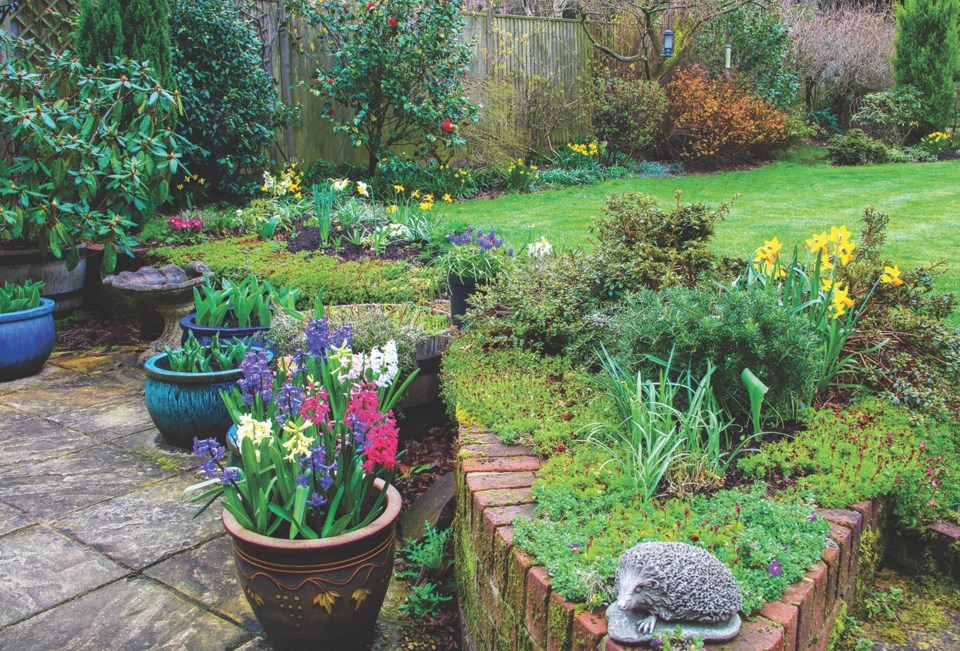A container, seeds, soil, and a watering can and you create a garden of Eden.
It is always a thrill to wander onto your patio or balcony and pick your salad of the day, or smell the sweet scent of one of your many flowers. Fragrant flowers or herbs add to the ambience of your patio.
While container gardening is often thought of as balcony gardening, containers can be placed on patios, raised beds, the traditional garden, hanging on a fence, or even on your driveway. You can start frost sensitive plants inside and take them outside when the threat of frost is over. In the fall, you can bring them in. In hot dry areas of your garden, you can ensure an adequate amount of water for plants in a container. You can start vegetable such as radishes and lettuce in an area with sufficient light and heat at any time of the year.
If you are gardening on a balcony, check the load it is designed to hold and plan accordingly.
You can move containers to take advantage of the sun or shade. For example, early in the season, place a container containing lettuce in a sunny location. Later when the weather is hotter, you can move it into a cooler location.
With a little care, you can grow a substantial amount of food with your flowers, and beautify an otherwise barren space.
Containers range from mugs, to small pots, to half-barrels. You can plant a pansy in a coffee cup. Even an old wheel barrow can be a container. Use your imagination. In each case, make sure the container is large enough for the plants. Containers may be made of plastic, a composite material of paper and other materials, wood, or concrete. Choose containers to enhance your balcony, deck, patio, fence, or driveway. Drill holes in the bottom for draining. Avoid clay pots unless glazed on the inside or water will evaporates through the sides.
An ideal container soil is a combination of compost, soil, sand, vermiculate, and potting soil, all well mixed. Do not add too much soil as it tends to compact, making it difficult for the roots to breath. If your soil is potting soil only, fertilize monthly because potting soil has few nutrients. Organic gardeners will add bone meal and blood meal.
Before transplanting, soak the seedlings, and wait for a day. In the transplant hole, add some liquid plant starter (10-52-10) and mix it into the soil at the bottom of the hole. Then transplant the seedling. About two weeks later, add 2 tablespoons of slow-release fertilizer (Miracle-Gro Ultra Bloom - purple top), mixed into the top 2 inches of the soil. Mulch to reduce surface evaporation. When using wood chips or grass clippings, add nitrogen fertilizer or coffee grounds; the process of decomposition takes nitrogen out of the container soil.
Provide minimum depths of 12 inches for deep root plants such as tomatoes, cucumbers, and most vegetables, and 6 inches for shallow rooted annual flowers, radishes, or lettuce. A 14x14x12 inch container is suitable for growing cucumbers, smaller determinate (bush) tomatoes, and peppers.
A minimum size for a hanging container or basket is 16 inches in diameter.
When growing vegetables, consider dwarf varieties. Carefully check seed packets or nursery seedlings to determine the size of the container required for optimum growth.
Use trellises for vine type plants such as peas, pole beans, indeterminate tomatoes, or cucumbers.
Choose shade loving plants such as impatiens, begonia, or lettuce for shady areas. Most other plants do well in full sun or partial shade.
Many Zone 3 dwarf apple, cherry, plum, peach, pear, orange and lemon fruit trees can be grown in large containers; check with the nursery on the size needed.
Be prepared to water your plants two or three times a week, and more often on hot days.
https://learningbygrowing.com/container-gardening
Charles Schroder gardens in the Edmonton area



.png;w=128;h=120;mode=crop)